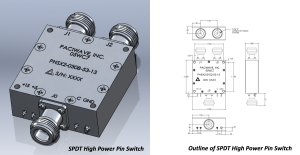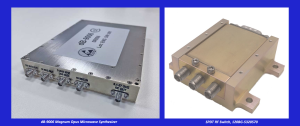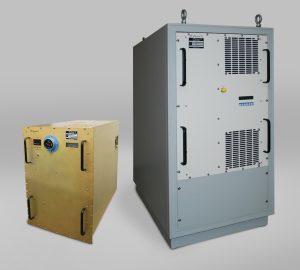by Jose Gonzales, Production Engineering Manager, dB Control
Microwave Power Modules (MPM) utilize a synergistic combination of a microwave tube and solid-state amplifier (SSA). The first MPM, developed in the early 1990s, used a solid-state driver amplifier, based on MMICs or discrete RF power transistors, to drive a mini-TWT, and combined these devices with a power supply and control circuits in a very compact enclosure.
Today’s MPMs follow the same concept. The RF signal path consists of a solid-state driver amplifier and a short-length booster TWT (typically about seven inches long), specifically designed for use with a lower-voltage power supply (up to 8 kV). The gain reduction that occurs from shortening the TWT helix length is compensated by the driver amplifier, and the gain in the RF chain is maintained. The power-handling capability, bandwidth, efficiency, and heat-tolerance capability of the TWT is fully utilized in this design. Field proven MPMs offer performance in the following areas. . .






